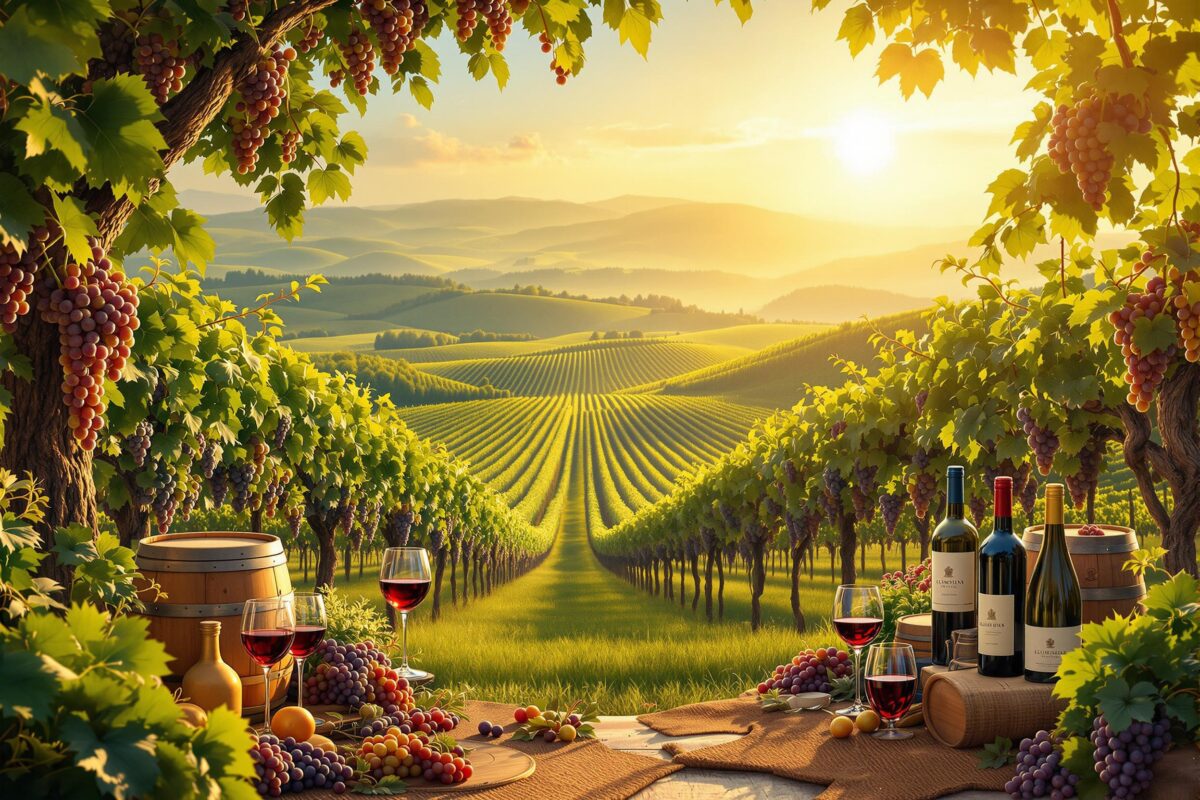The Dynamic World of Premium Wines
The global wine market, especially the premium sector, is transforming. Understanding the forces at play is crucial for anyone involved, from vineyards to connoisseurs. Premium wines aren’t just drinks; they’re cultural touchstones, investments, and symbols of luxury. This article explores the multifaceted world of premium wines, examining growth drivers, industry mechanics, sustainability, digital advancements, and future trends. For businesses like TourDeWine, specializing in collectible wines and spirits, understanding these dynamics is key to success.
Growth Drivers in The Global Wine Market
The global wine market is booming, valued at roughly $455.56 billion in 2024 and projected to grow substantially. What’s fueling this expansion? Premiumization is a major factor. Consumers are increasingly seeking top-quality wines, boosting demand for luxury brands. Fine wine investment is also gaining traction, especially in Asia, where it’s becoming a recognized asset class. Emerging markets like India and China are reshaping the landscape with their expanding consumer bases and evolving palates. These markets offer immense potential, but require tailored strategies. Wine trade events worldwide connect stakeholders and drive sales.
Premiumization and Investment Trends in Luxury Wine
Premiumization reflects a fundamental shift in consumer behavior. People are buying less, but better. This trend is particularly strong in developed economies and emerging in developing markets. Simultaneously, fine wine is becoming a tangible asset class, driven by limited production, rare vintages, and critical acclaim. Asia, with its growing wealth and sophisticated investors, is a hotspot for fine wine investment.
Emerging Markets and Shifting Consumer Demographics
Emerging markets, particularly India and China, are transforming the global wine market. Economic growth and disposable income fuel the demand for premium wines. Younger, digitally native generations are also driving wine consumption and influencing online purchasing. These diverse markets require tailored strategies to meet specific local preferences.
Detailed Sector Mechanics: Distributors, Regional Trends, and Demand Shifts
Navigating the global wine market requires understanding its intricate mechanics. Wine distributors connect producers with consumers. The US wine distribution market, a major player at $94.5 billion annually, is highly concentrated, with 82% of revenue coming from top companies. This highlights the importance of established networks. Regional trends greatly influence demand, shaped by climate, cuisine, and culture. Online wine retail is disrupting traditional models, offering direct-to-consumer channels.
The Critical Role of Wine Distributors in Market Access
Wine distributors are essential intermediaries in the wine and spirits industry. They link wineries to various retail channels, from restaurants to online platforms. Strong distributor relationships are key to market access and brand visibility. The concentration in the US market makes securing distribution agreements challenging, especially for smaller wineries and emerging brands.
Analyzing Regional Wine Trends and Consumer Preferences
Regional wine trends are diverse and dynamic, shaped by climate, local cuisines, and cultural heritage. Mediterranean regions often prefer robust reds, while coastal areas might lean towards crisp whites and rosés. Health and wellness trends are also influencing demand, with growing interest in lower-alcohol and organic options.
The Sustainability Revolution: Challenges and Breakthrough Practices
Sustainability is a core value in the global wine market, especially for premium wines. Consumers prioritize environmentally and ethically produced goods, driving demand for sustainable winemaking. Regenerative agriculture and biodynamic farming are key practices reshaping vineyard management, focusing on soil health, biodiversity, and reduced chemical inputs.
Regenerative Agriculture and Biodynamic Farming in Vineyards
Regenerative agriculture and biodynamic farming are revolutionizing sustainable wine production. Regenerative agriculture focuses on restoring soil health through practices like cover cropping and composting. Biodynamic farming, a holistic system, integrates organic principles with specific preparations and natural rhythms. Both methods enhance biodiversity and reduce reliance on synthetic inputs.
Overcoming Challenges and Embracing Innovative Eco-Friendly Practices
Transitioning to sustainable wine production has its challenges, like initial costs and certification complexities. However, innovations like precision viticulture and water-efficient irrigation are mitigating these hurdles. Precision viticulture leverages technology to optimize resource management, while efficient irrigation minimizes water use, particularly in arid regions.
Leveraging Digital Channels and AI in Wine Commerce
Digital channels and AI are transforming wine commerce, enhancing accessibility and brand strategies. Online wine retail is changing purchasing behaviors, with consumers turning to e-commerce. AI optimizes the wine and spirits distribution process, from inventory to personalized recommendations, improving efficiency and customer experience.
The Transformation of Wine Retail Channels Through E-commerce
E-commerce has revolutionized wine retail, making premium wines more accessible. Online platforms offer convenience, extensive selections, and competitive pricing. This shift online requires luxury wine brands to adapt their marketing and sales strategies for digital consumers.
AI-Powered Innovations in Wine and Spirits Distribution and Customer Engagement
AI is driving innovation throughout the wine and spirits industry. AI-powered tools optimize inventory, predict demand, and streamline logistics. AI algorithms also personalize recommendations, improving customer experience and driving sales. Chatbots and virtual assistants provide instant support.
Market Vision: Predictions, Emerging Markets, and Calls for Ethical Trends
The future of premium wines is marked by continued growth and evolving trends. Predictions point towards sustained premiumization, with luxury brands strengthening their position. Emerging markets will continue driving growth, while ethical trends, including sustainability and fair labor practices, will become increasingly crucial.
Future Predictions and Long-Term Growth Trajectories for Premium Wines
The outlook for premium wines remains positive, with sustained growth expected. Premiumization is likely to persist, driven by affluent consumers seeking quality and exclusivity. Fine wine investment will probably expand, attracting more investors. Emerging markets will play an increasingly significant role.
The Growing Importance of Ethical Considerations and Sustainable Practices
Ethical considerations and sustainable practices are now central to the wine market. Consumers are demanding transparency and accountability, prioritizing brands that champion environmental and social responsibility.
